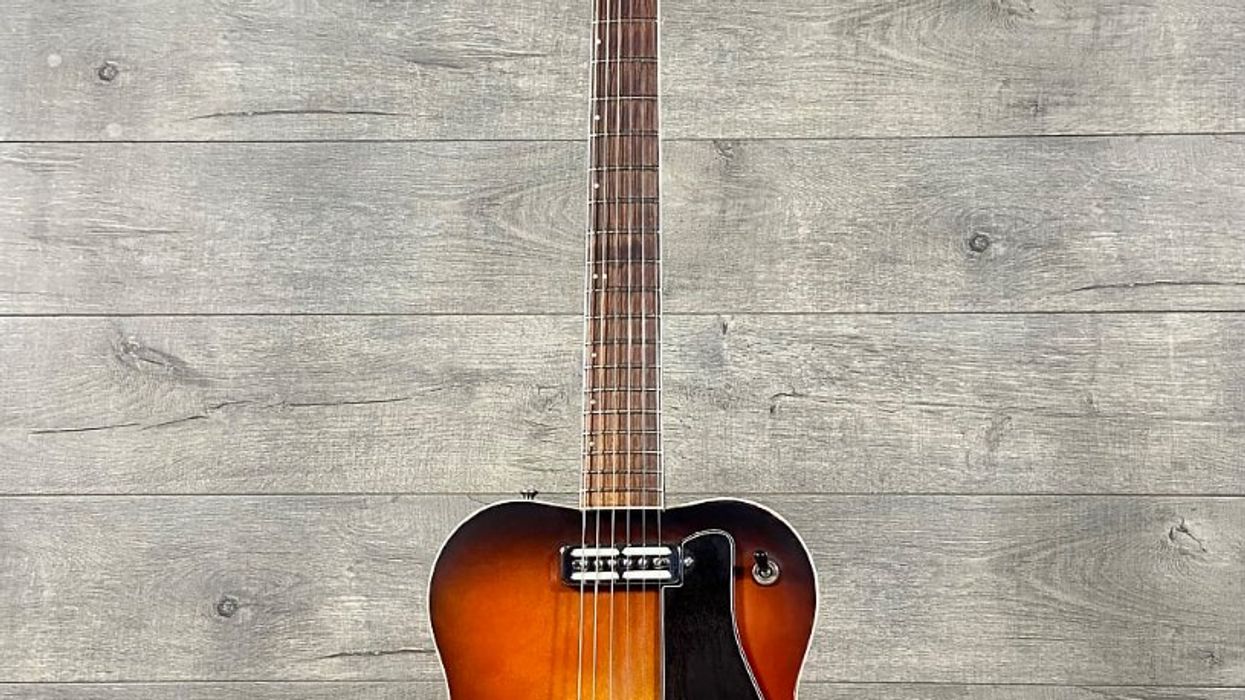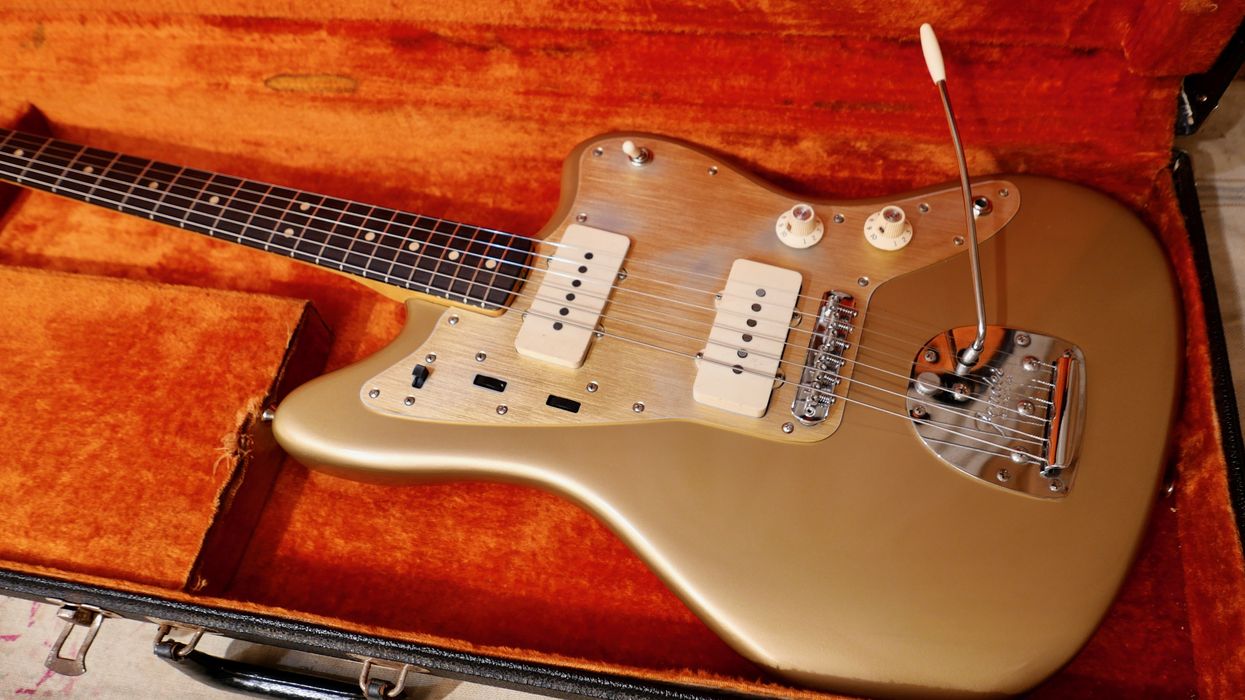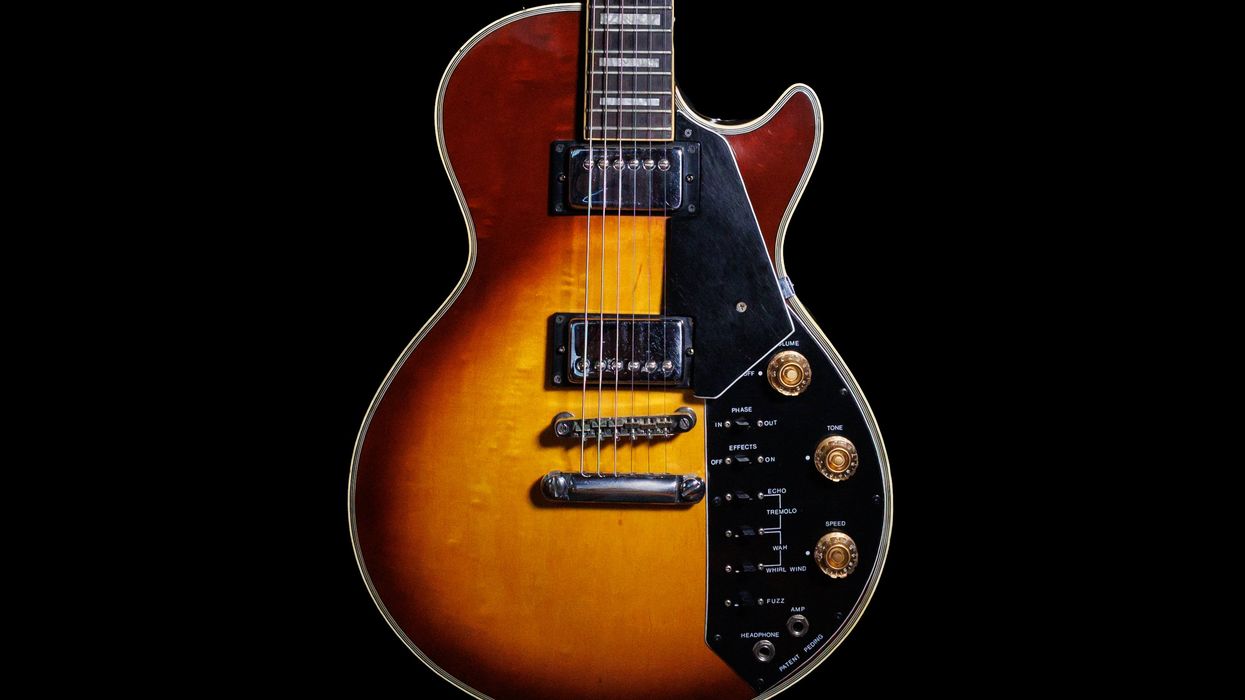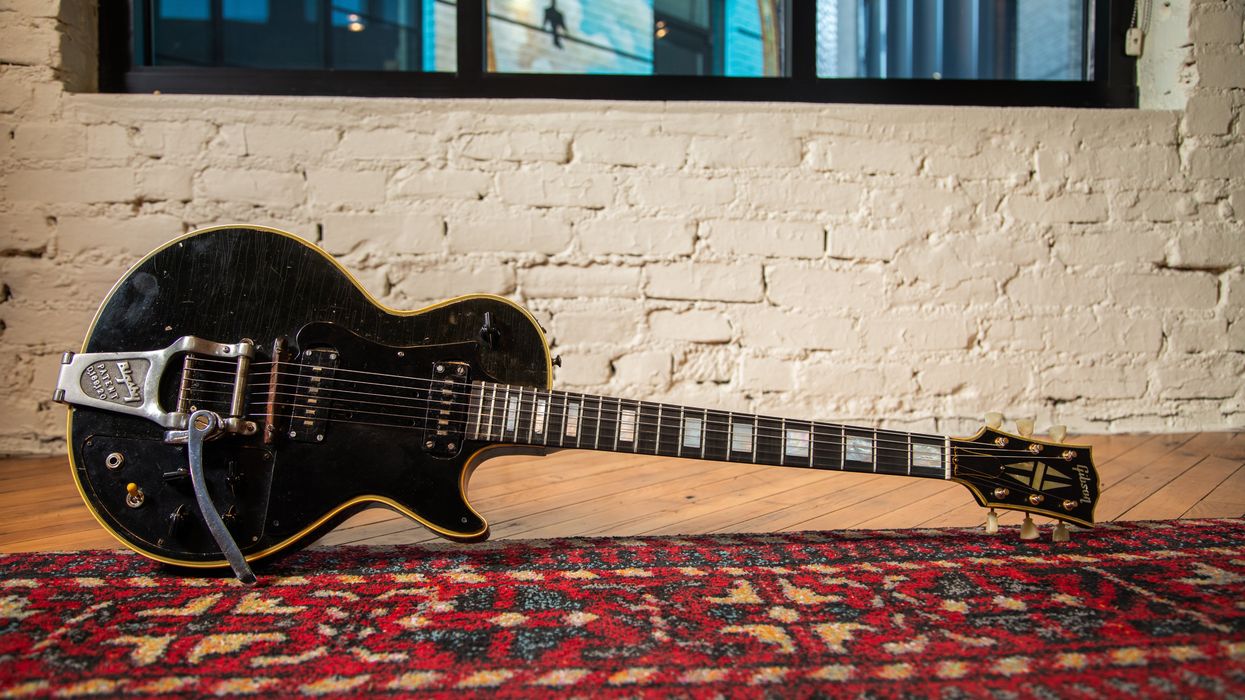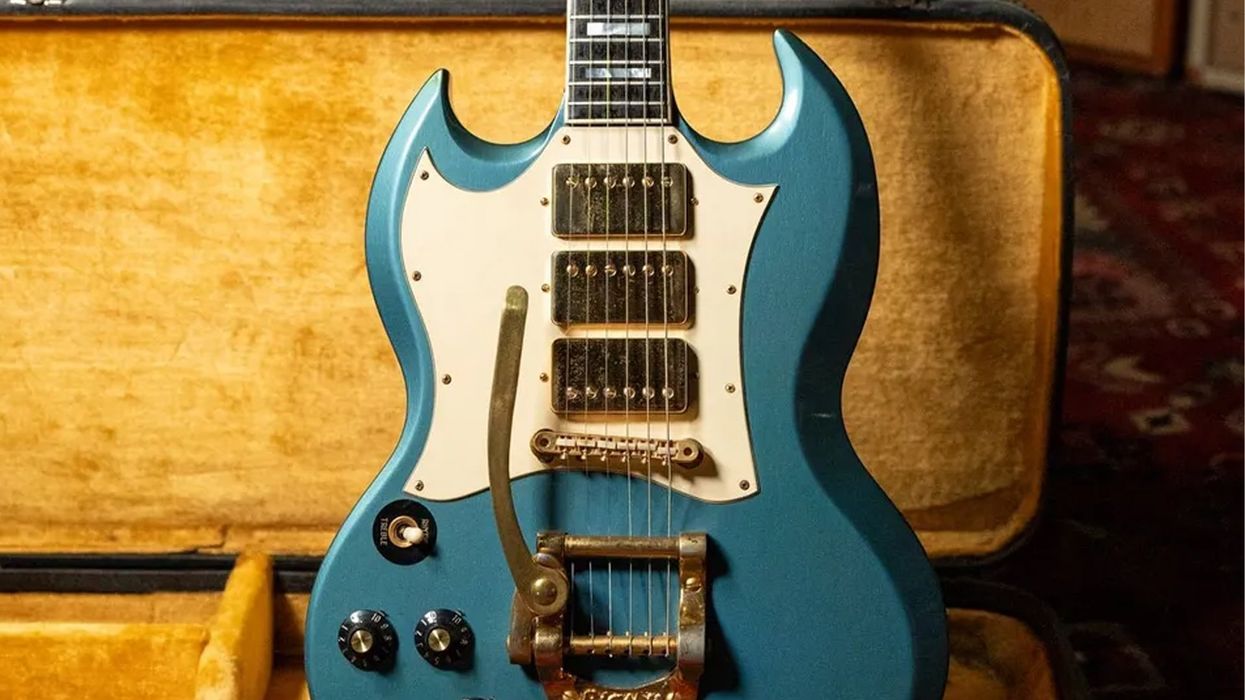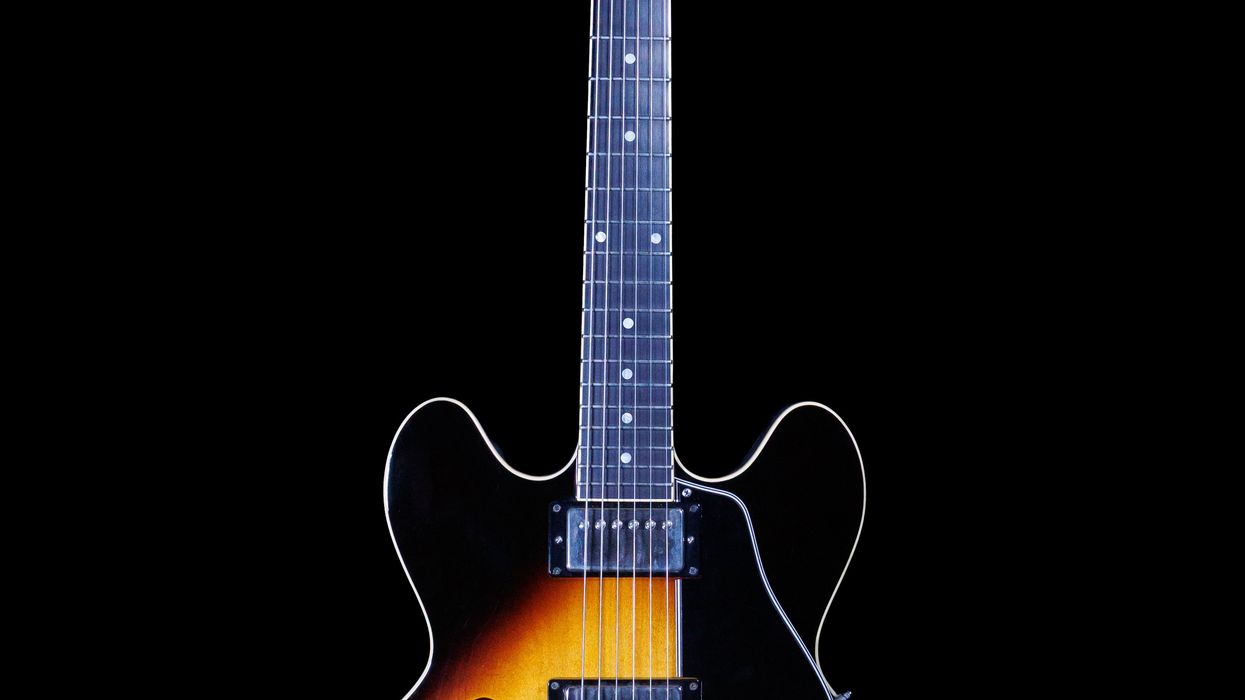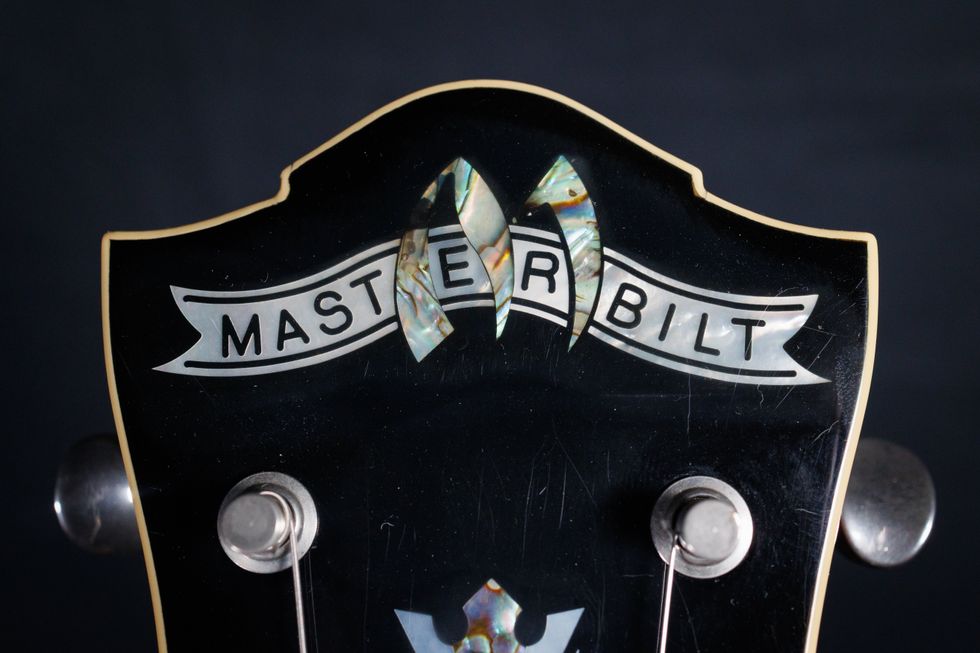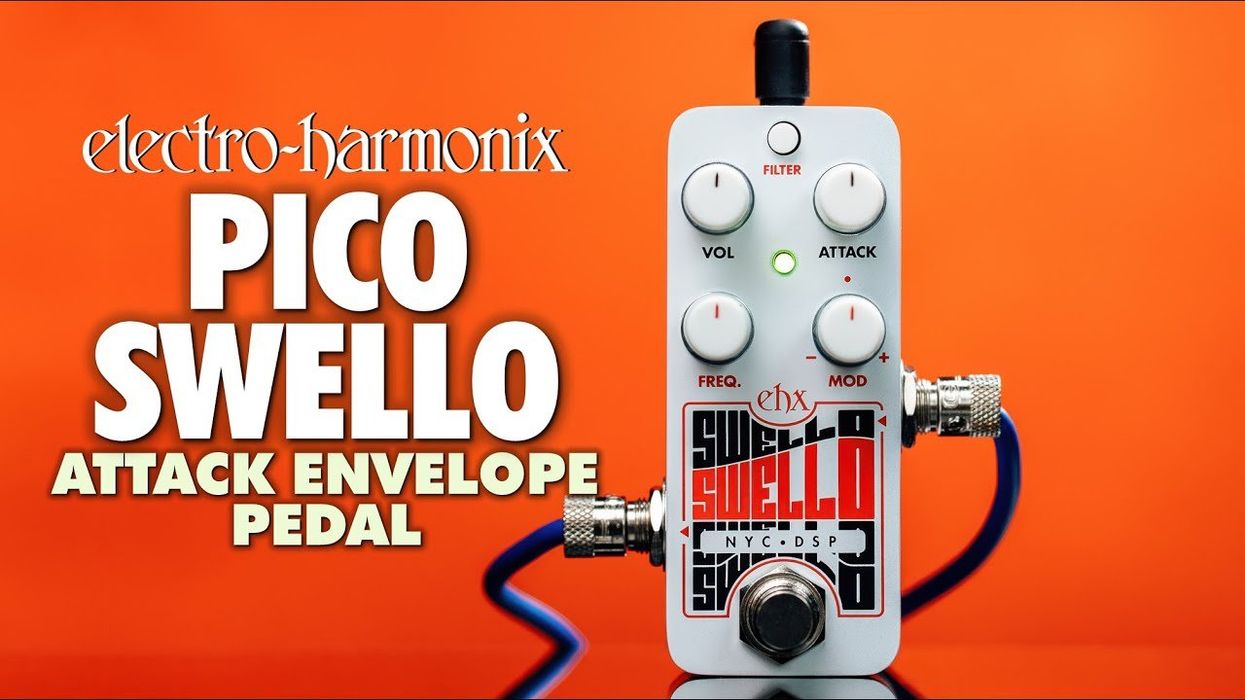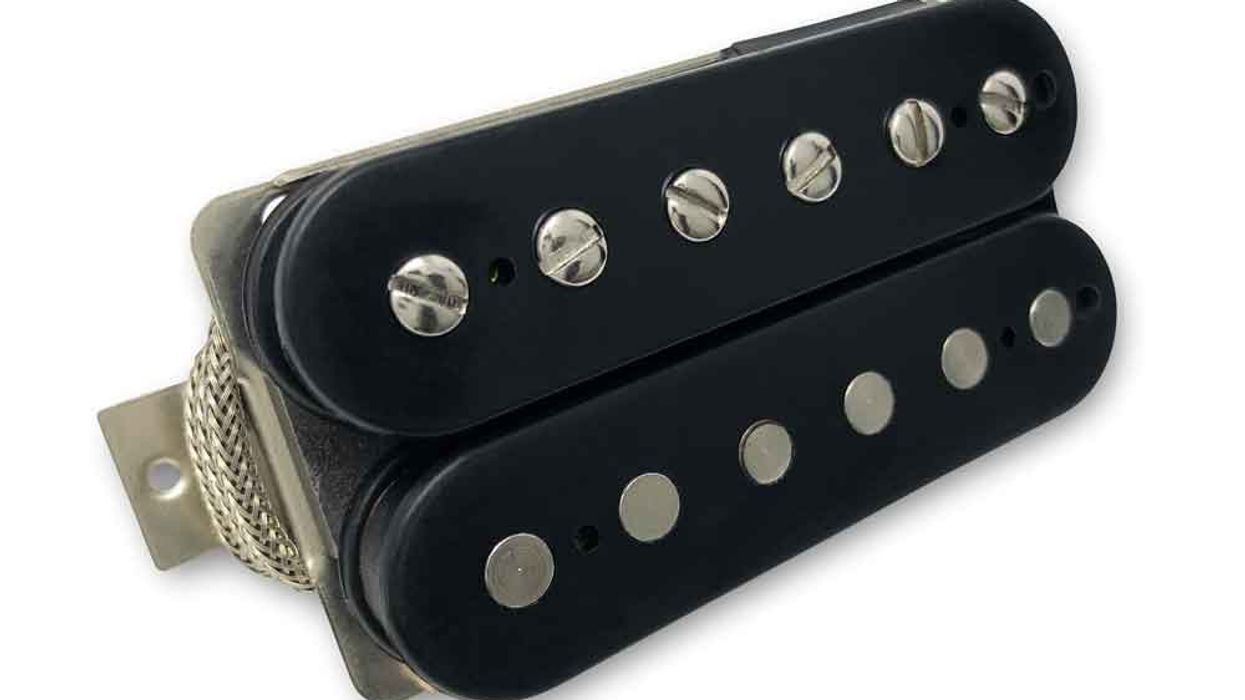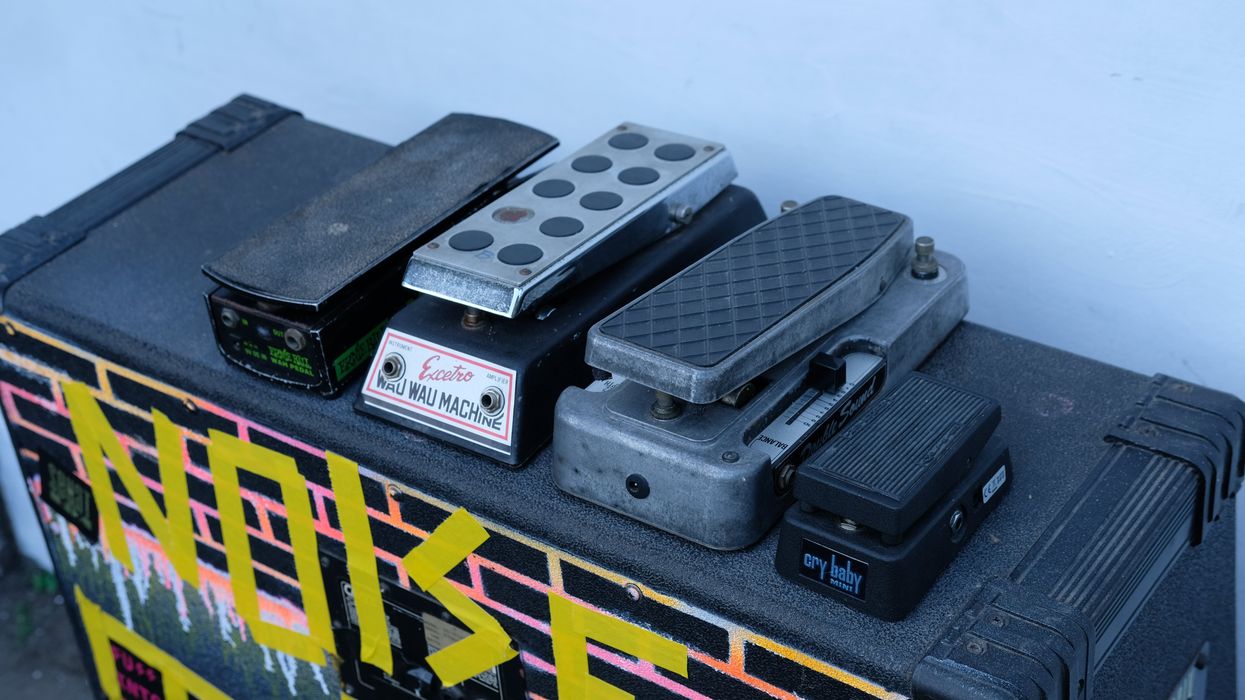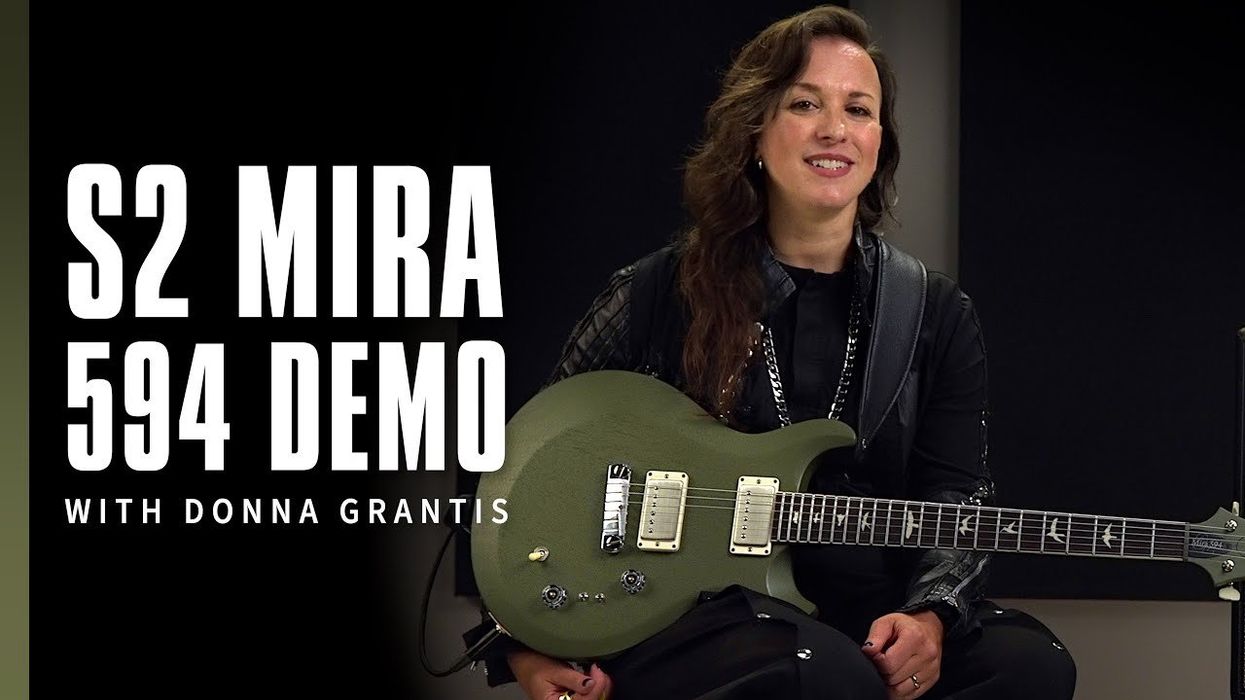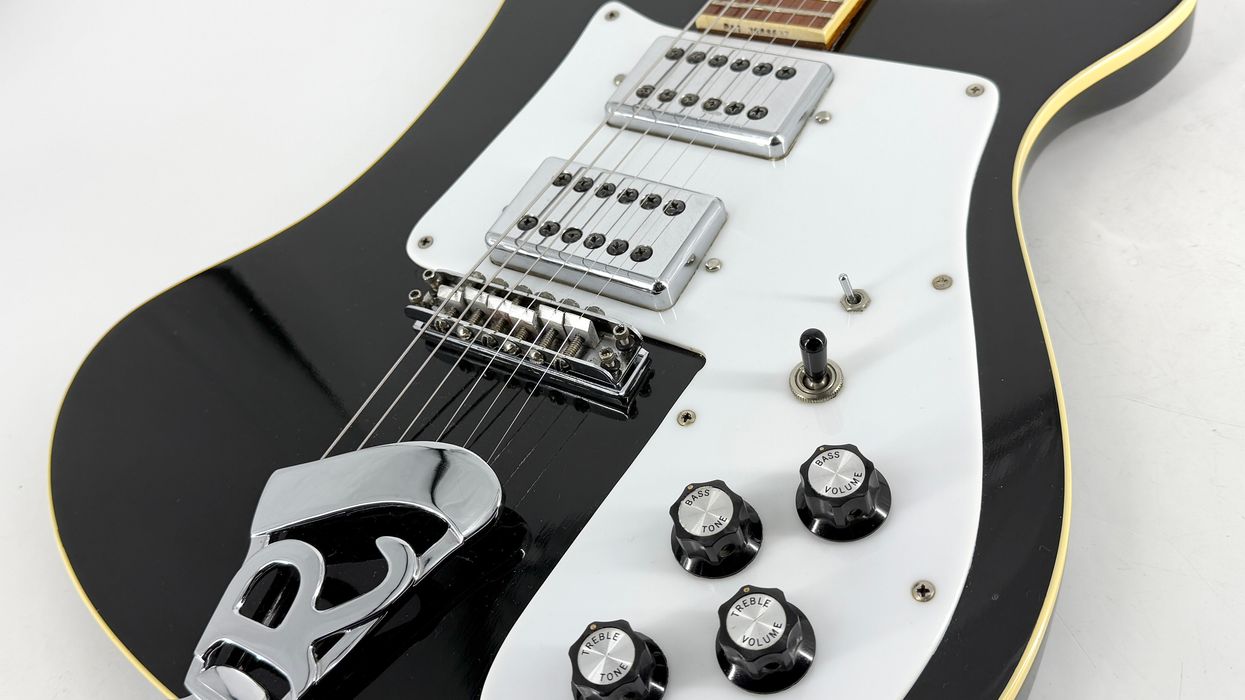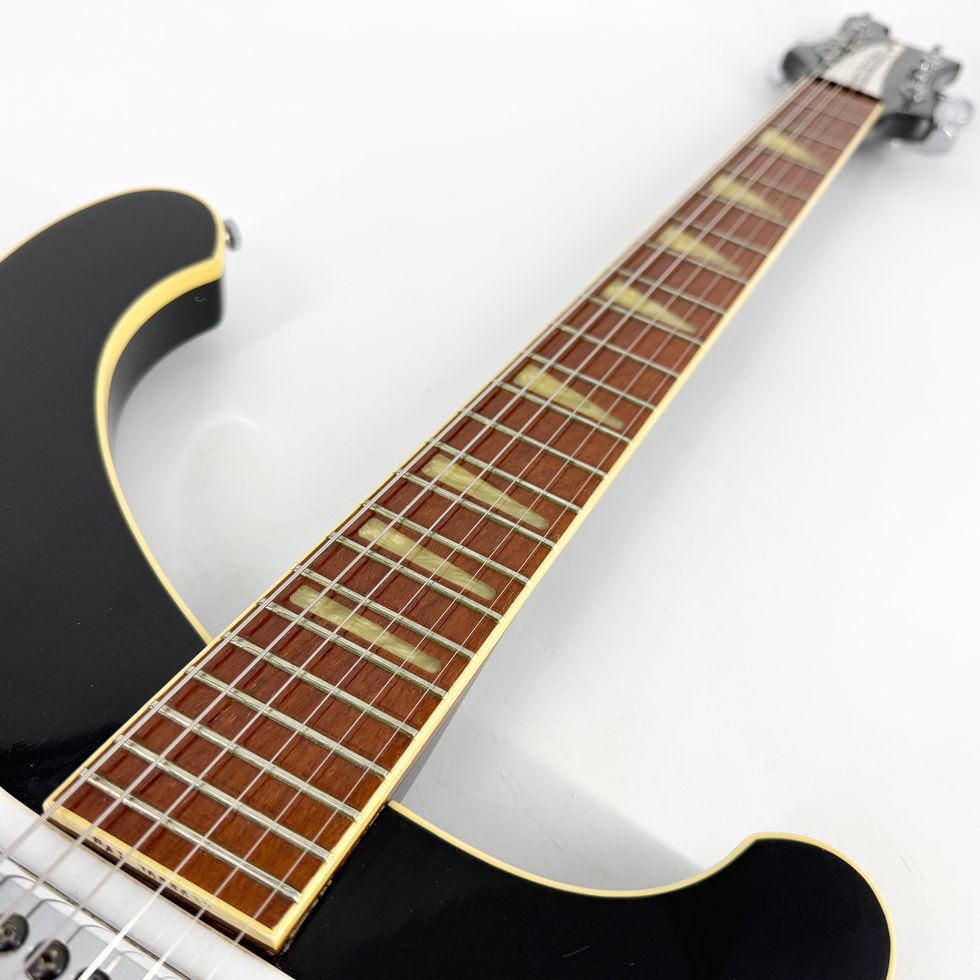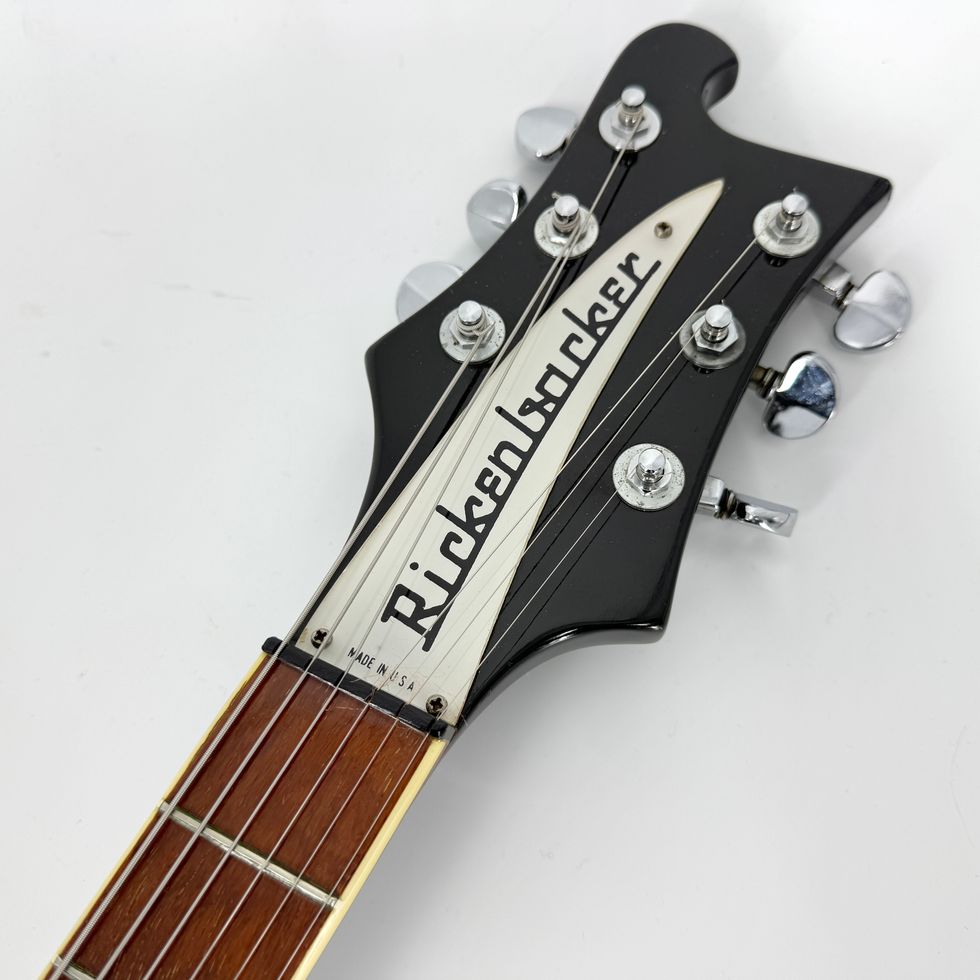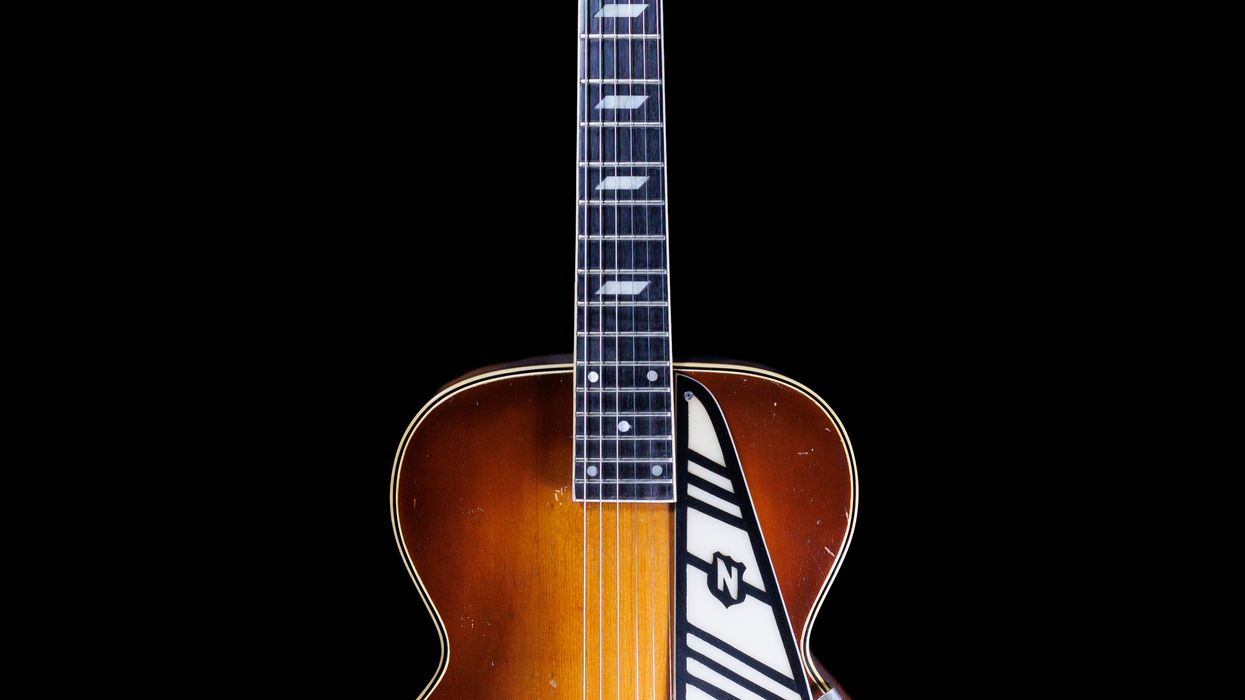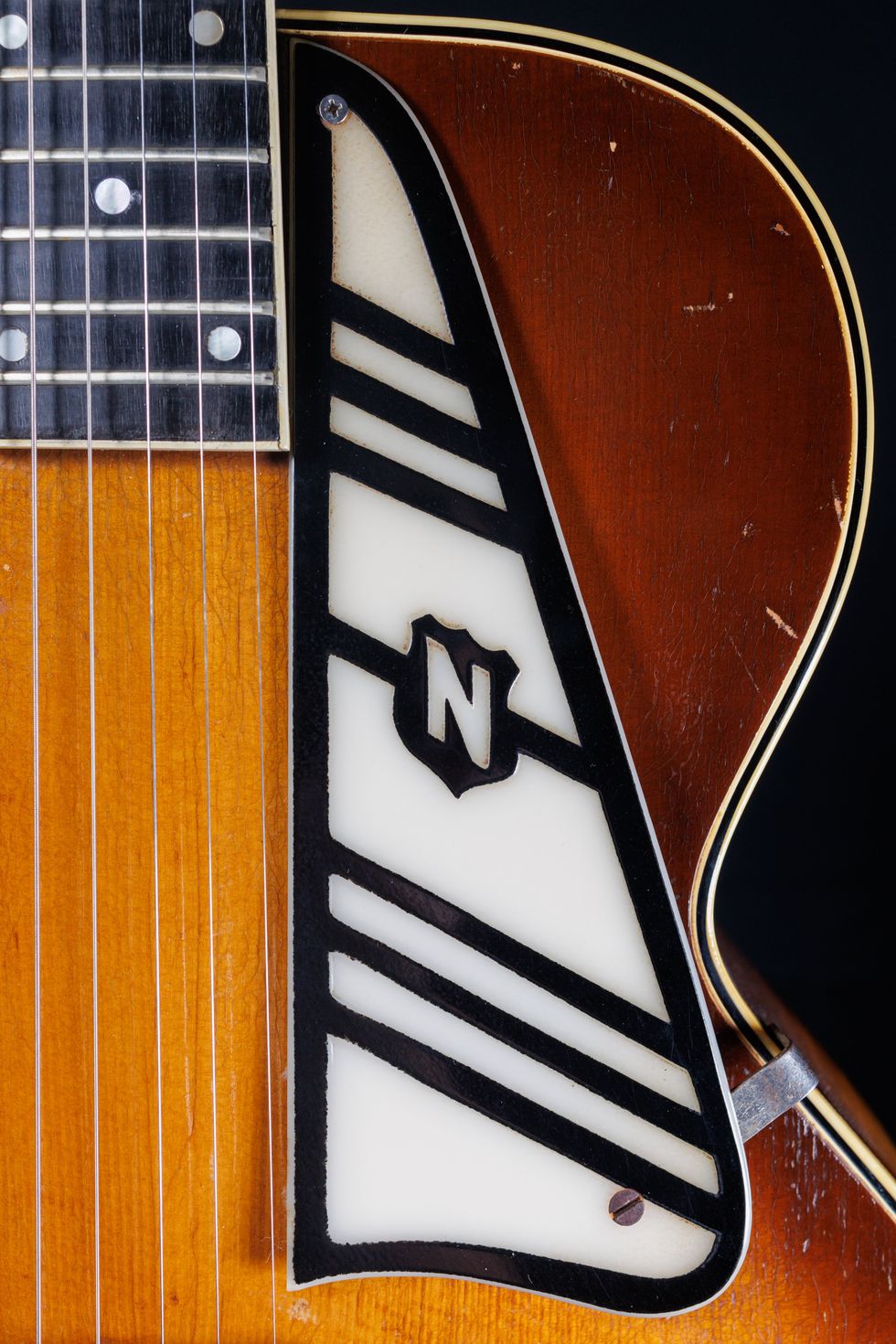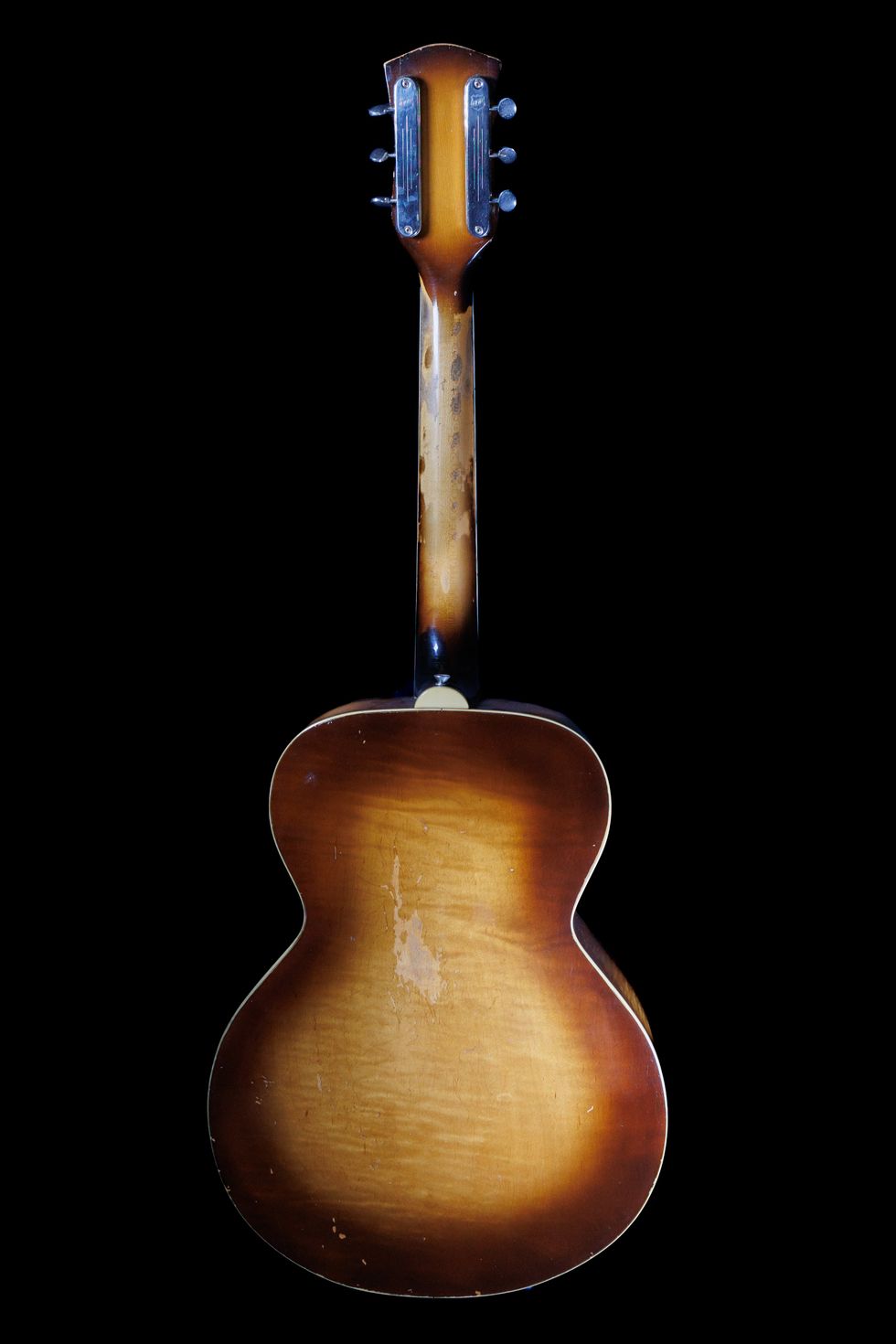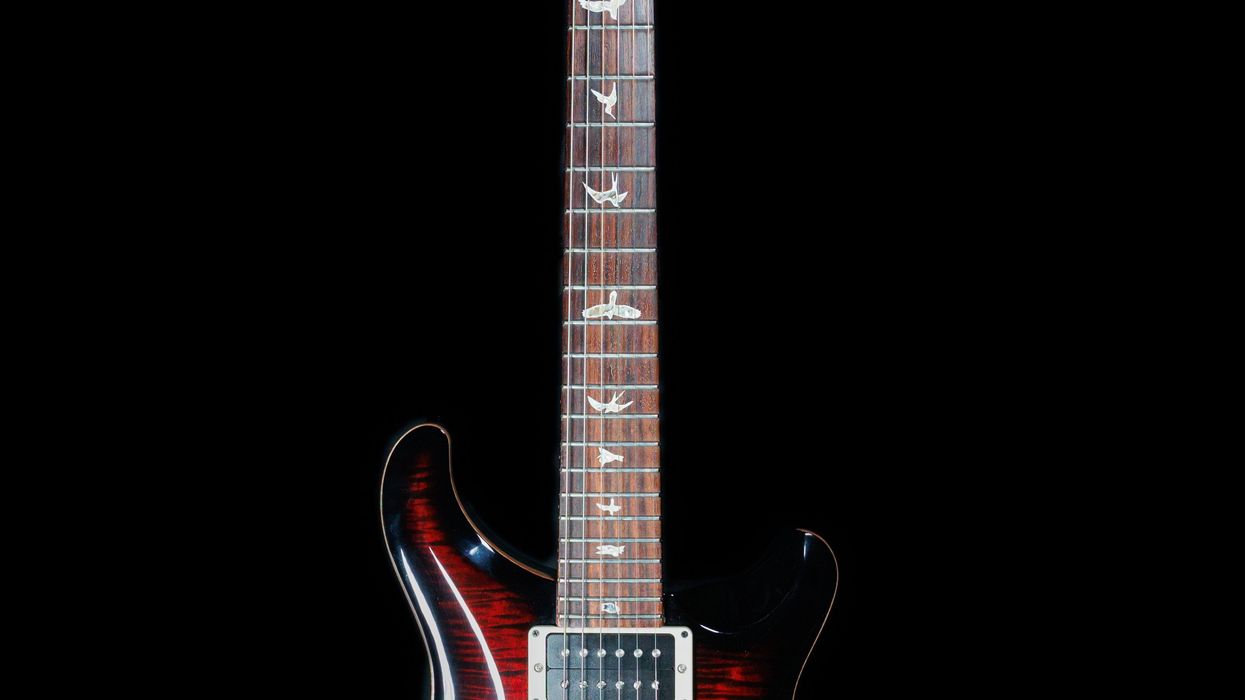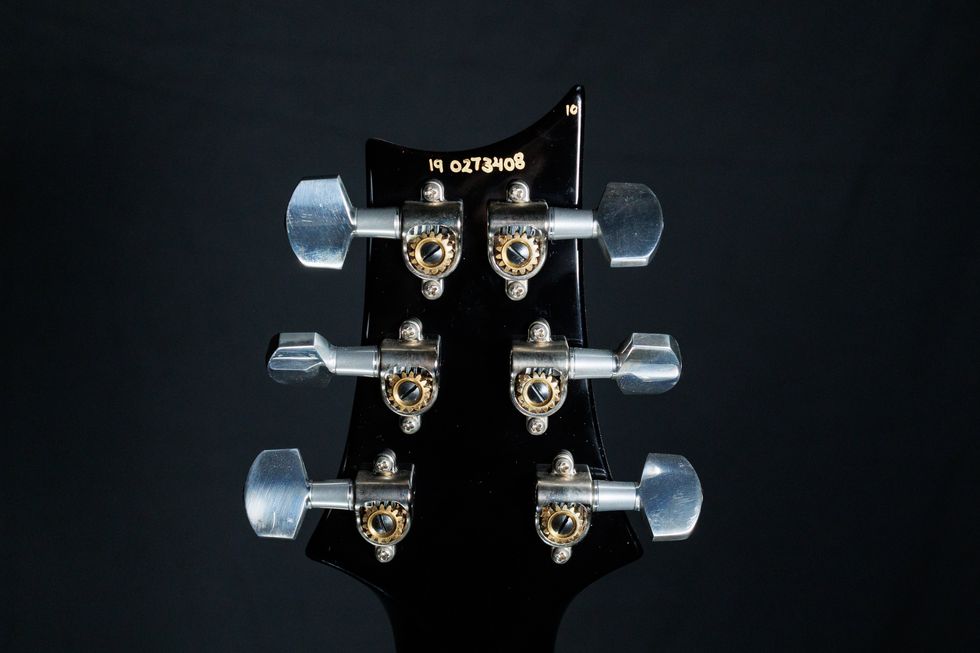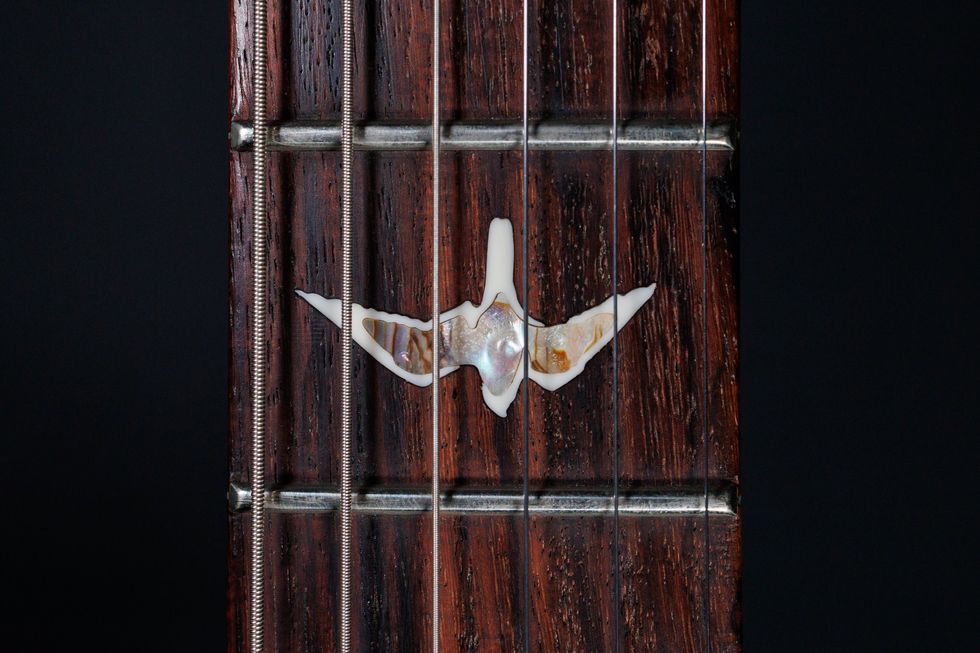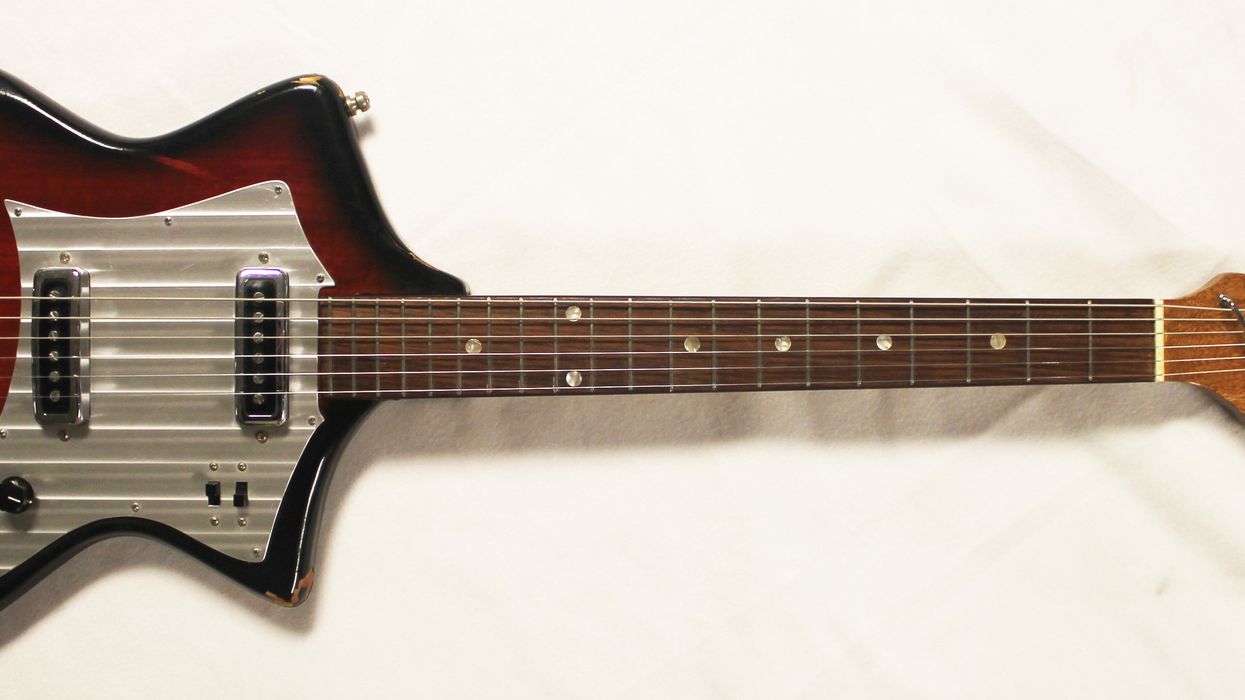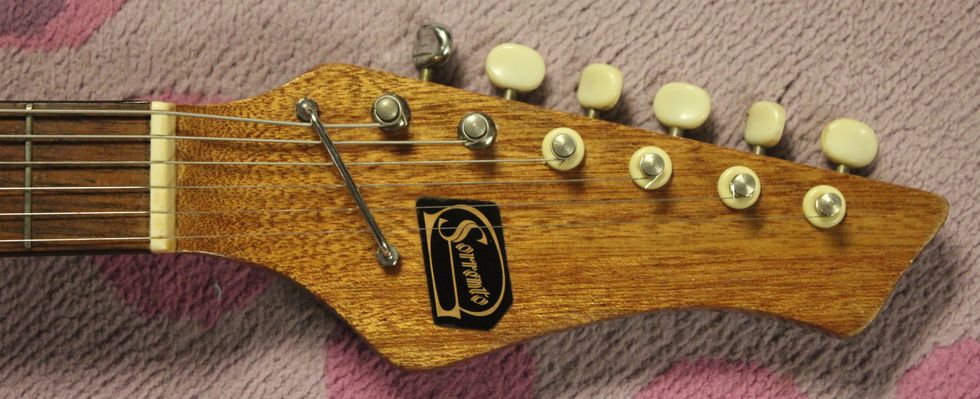Funky, mysterious, and rare as hen’s teeth, the Musicraft Messenger is a far-out vintage guitar that emerged in the Summer of Love and, like so many heady ideas at the time, didn’t last too much longer.
The brainchild of Bert Casey and Arnold Curtis, Musicraft was a short-lived endeavor, beginning in San Francisco in 1967 and ending soon thereafter in Astoria, Oregon. Plans to expand their manufacturing in the new locale seemed to have fizzled out almost as soon as they started.
Until its untimely end, Musicraft made roughly 250 Messengers in various configurations: the mono-output Messenger and the flagship Messenger Stereophonic, both of which could come with the “Tone Messer” upgrade, a built-in distortion/fuzz circuit. The company’s first catalog also featured a Messenger Bass, a wireless transmitter/receiver, and various models of its Messenger Envoy amplifier, very few of which have survived, if many were ever made at all.
“To this day, even fans will sometimes call the decision to use DeArmonds the Messenger’s ‘Achilles’ heel.’”
Upon its release, the Messenger was a mix of futuristic concepts and DeArmond single-coil pickups that were more likely to be found on budget instruments than pricier guitars such as these. The Messengers often featured soapbar-style DeArmonds, though some sported a diamond grille. (To this day, even fans will sometimes call the decision to use DeArmonds the Messenger’s “Achilles’ heel.”) The Stereophonic model, like the one featured in this edition of Vintage Vault, could be plugged into a single amplifier as normal, or you could split the bridge and neck pickup outputs to two separate amps.
One of the beloved hallmarks of the guitars are their magnesium-aluminum alloy necks, which continue as a center block straight through the tailpiece, making the guitars relatively lightweight and virtually immune to neck warping, while enhancing their playability. Thanks to the strength of that metal-neck design, there’s no need for a thick heel where it meets the body, granting unprecedented access to the higher end of the fretboard.
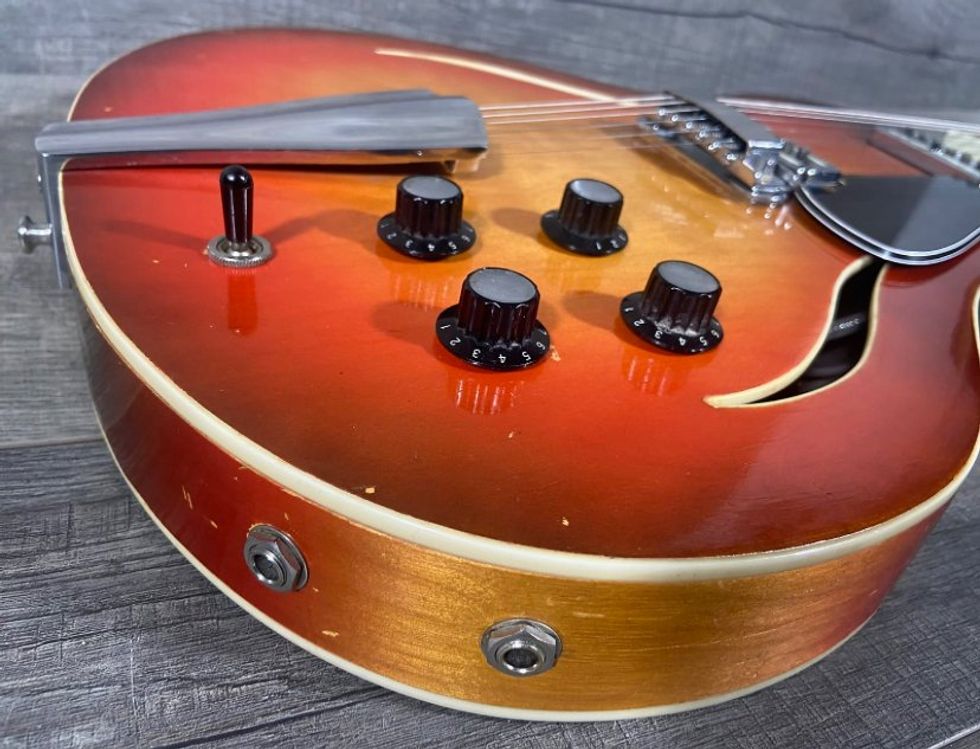
This Stereophonic model could be plugged into a single amplifier as normal, or you could split the bridge and neck pickup outputs to two separate amps.
The neck was apparently also tuned to have a resonant frequency of 440 Hz, which, in all honesty, may be some of that 1967 “whoa, man” marketing continuing on through our modern-day guitar discourse, where this fact is still widely repeated on forums and in YouTube videos. (As one guitar aficionado to the next, what does this even mean in practice? Would an inaudible vibration at that frequency have any effect at all on the tone of the guitar?)
In any event, the combination of that metal center block—resonant frequency or not—the apple-shaped hollow wooden body of the guitar, and the cat’s-eye-style “f-holes” did make it prone to gnarly fits of feedback, especially if you engaged the Tone Messer fuzz and blasted it all through the high-gain amp stacks favored by the era’s hard rockers.
The most famous devotee of the Messenger was Grand Funk Railroad’s Mark Farner, who used the guitar—and its Tone Messer circuitry—extensively on the group’s string of best-selling records and in their defining live shows, like the Atlanta Pop Festival 1970 and their sold-out run at New York’s Shea Stadium in 1971. But even Farner had some misgivings.
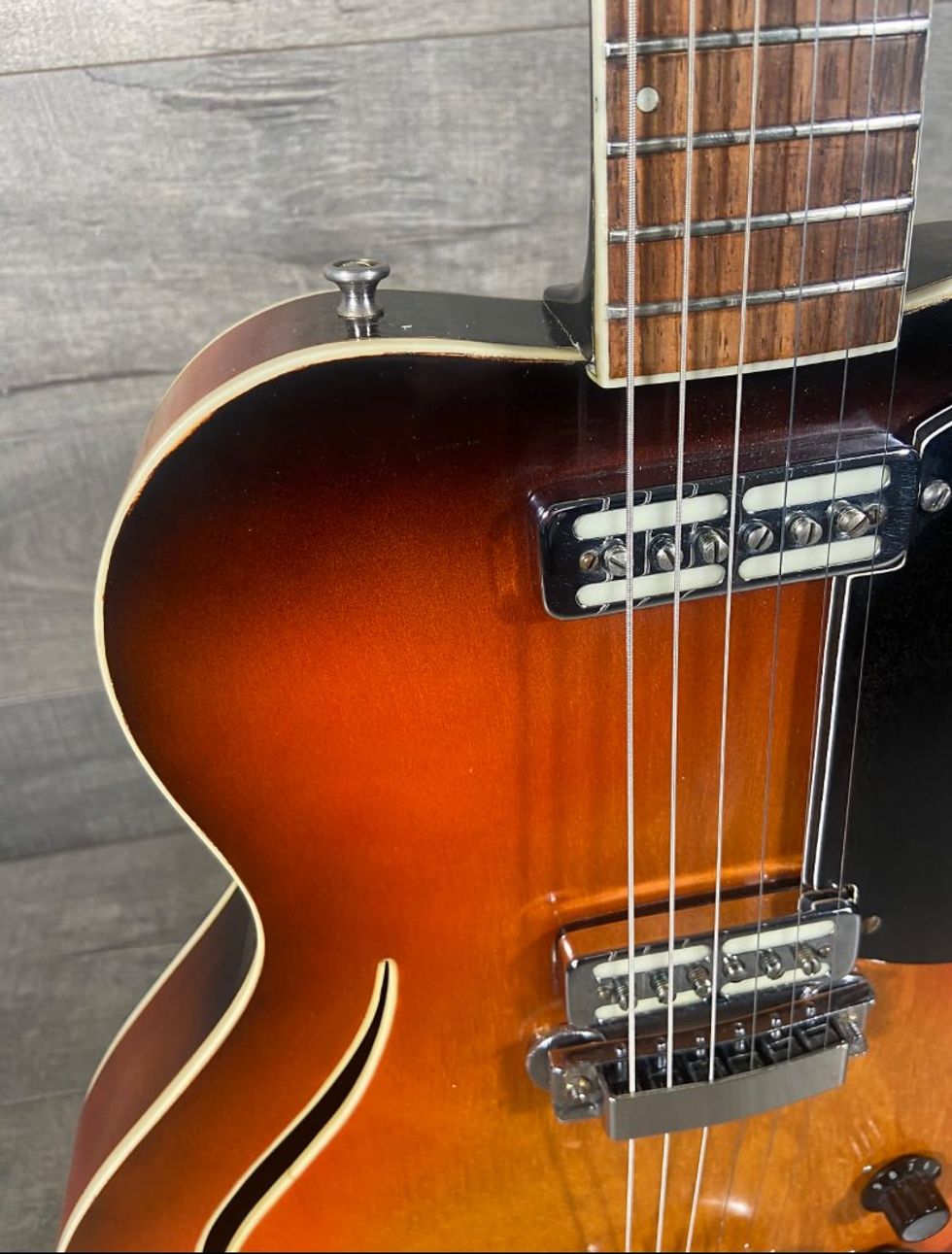
The Messengers often featured soapbar-style DeArmonds, though some sported a diamond grille.
In a 2009 interview, he talked about his first test-run of the guitar: “After I stuffed it full of foam and put masking tape over the f-holes to stop that squeal, I said, ‘I like it.’” He bought it for $200, on a $25-per-pop installment plan, a steal even at the time. (He also made it over with a psychedelic paint job, befitting the era, and experimented with different pickups over the years.)
When these guitars were new in 1967, the Messenger Stereophonic in morning sunburst, midnight sunburst, or mojo red would have run you $340. By 1968, new stereo models started at $469.50. Recent years have seen prices for vintage models steadily increase, as the joy of this rarity continues to thrill players and collectors. Ten years ago, you could still get them for about $1,500, but now prices range from $3,000 to $6,000, depending on condition.
Our Vintage Vault pick today is listed on Reverb by Chicago’s own SS Vintage. Given that it’s the stereo model, in very good condition, and includes the Tone Messer upgrade, its asking price of $5,495 is near the top-end for these guitars today, but within the usual range. To those readers who appreciate the vintage vibe but don’t want the vintage price tag, Eastwood Guitars offers modern reissues, and eagle-eyed buyers can also find some very rare but less expensive vintage MIJ clones made in the late ’60s and early ’70s.
Sources: Reverb listing from SS Vintage, Reverb Price Guide sales data, Musicraft July 1, 1967 Price Schedule, 1968 Musicraft Catalog, Chicago Music Exchange’s “Uncovering The Secret Sounds of the 1967 Musicraft Messenger Guitar,” MusicPickups.com article on the Messenger.